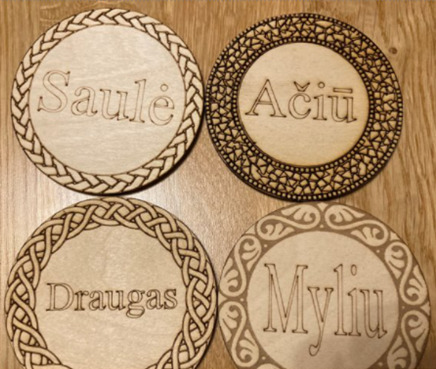

Story World
Students make cardboard cubes out of printed templates, which they then decorate with motifs related to the fairy tale.


Let's learn by having fun
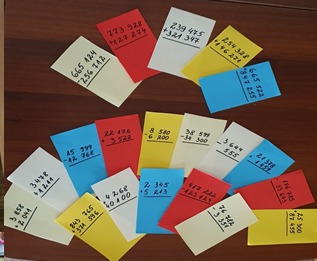
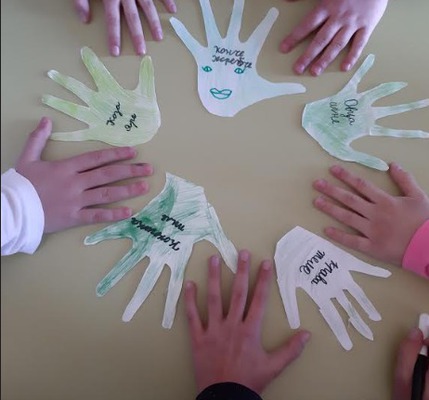
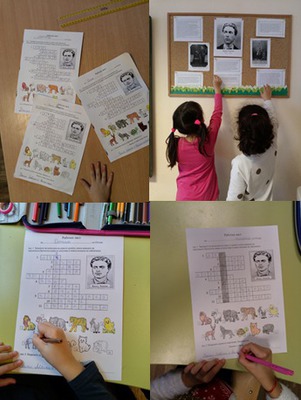
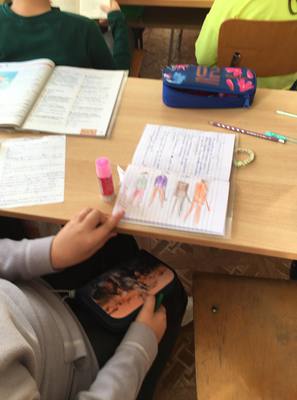
POLAND
HITCHHIKING- board game
For 2-4 people.
Roll the dice, the first one who reach the finish line, wins. Along the way there are some questions and challenges. If the gamer answers correctly, he'll move forward 1 or 2 fields, it depends on the difficulty of the questions, if the gamer gives the wrong answer, he'll go back 1 or 2 fields.

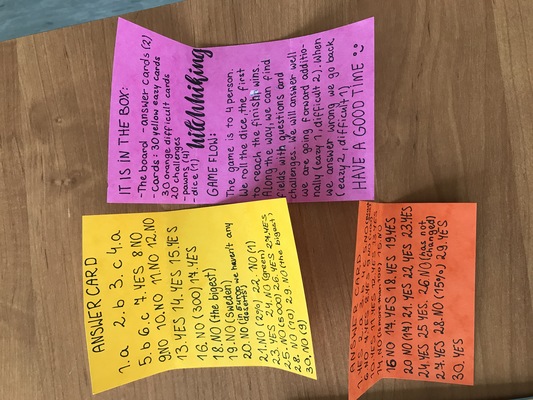
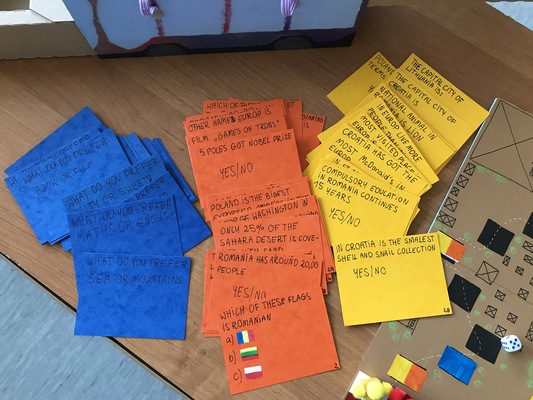
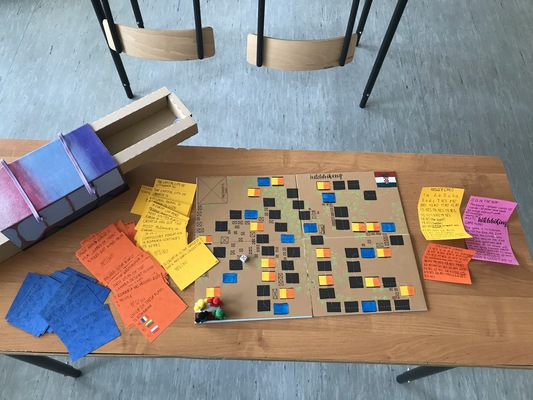
TRAVELLERS
For 2-3 teams of students.
The goal of the game is to reach the finish line as quickly as possible. To do this, you need to tell the stories as accurately as possible and create sentences. Each team chooses its captain and color chips. The captain draws smaller board, on which the road is marked and tells about the words on the main board. On the smaller chosen board, there is a route that your team has to guess.

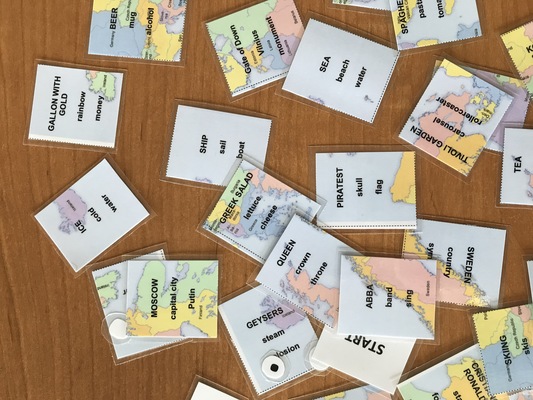

ERASMUS+ QUIZ
For 2-4 students.
The goal of the game is to check the cultural knowledge about our partners‘ countries. To do this, you need to choos cards from selected category and answer the questions. For every correct answer, you get one token. The winner is a person with the biggest number of tokens.
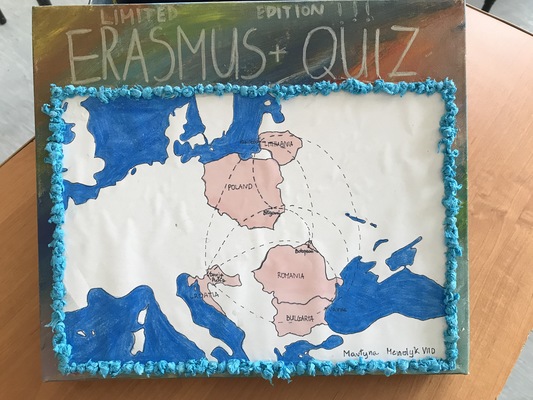
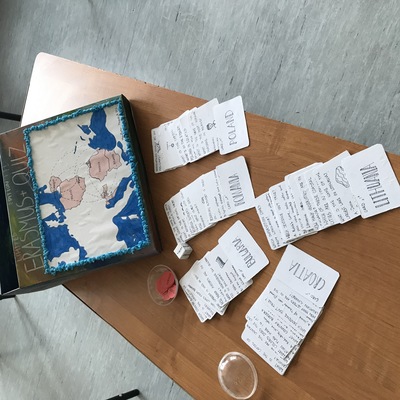


5 seconds
It is a quick thinking and speaking game, including a program of Lithuanian language and literature for grades 5-8.
After picking one card, you have to answer the question within 5 seconds.
It can be played individually and/or in teams. When playing in teams, students feel safer, more relaxed and revise what they have forgotten. In teams they do not experience uncomfortable.
Slogans, names of the team can be adopted to the topic of the day’s lesson (or cycle summary). For example, we started learning pronominal pronouns, so teams’ names were "Adomas Didysis" ir "Emilė Judrioji" (Adam the Great and Emile the Vigorous).
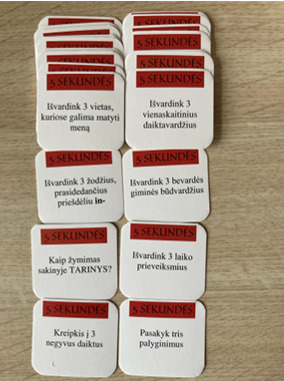
Alias
This game can be played by four players or bigger teams. Cards with the words are mixes and put into one pack. The lower card is flipped in order to notice that all card have been played and remix the pack again when needed. The order of the game is decided by lot. Teams collect points that are listed in the table.
Teams have to decide which members explain and which guess. The player pulls the card and describes the meaning of the word for team member so that he could guess it. It is not allowed to use parts of the word or deliberately related words, or words with the same root in description. Time for explanation runs out according the sand clock. Team gets as many points as its member correctly guesses words.
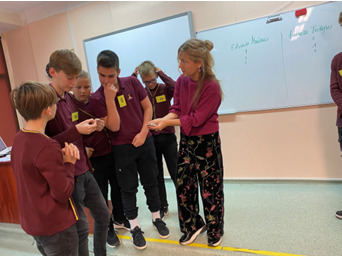
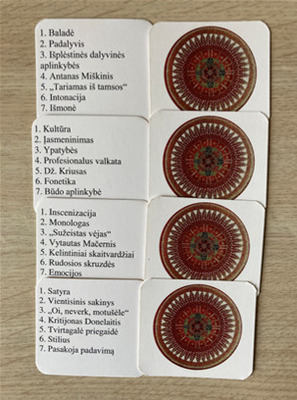
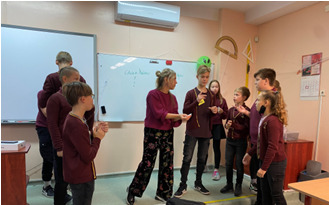
The Soft letters
Using letters sewn by students’ parents, children learn to read.
Brightly coloured letters are large.
Student perform different tasks using these letters:
The teacher arranges students in a certain order to make a word, while others have to read the formed word;
Each student gets a letter after that they have to write the both upper case and lower case letters correctly;
Each student gets a letter and all together they have to form the word which the teacher asked. This develops the students' reaction, because they need to know what letter they have and to react fast to stand in the right place to form a word;
Letters are given to students, then time is given for students to find “friends” “letters” to form a word. When the words are formed, the groups stop in a row. The composed words are then read and a short story is created orally using these words.
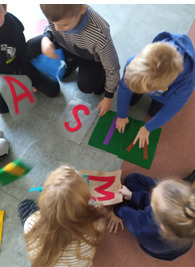
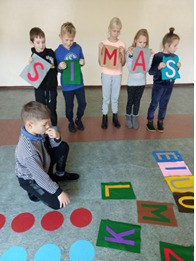

Hand dolls
Students design and make hand dolls using paper gift bags.
When dolls are ready, children are divided into groups.
The group creates a story where the main characters are their dolls.
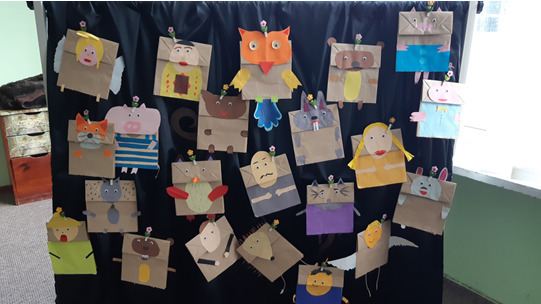
A sandbox
A sandbox is for the students’ attention and creativity training, knowledge examination. They get different tasks:
To choose in the sand one stone with the illustration, to find a mate and together create a text, be sure to use people / objects / environments depicted in the stone;
To choose a stone in the sand with difficult spelling word, to write it correctly and explain the spelling; after pulling out a few stones with words of heavy spelling, come up with a sentence, write it down;
To choose a few stones in the sand, to summarize the lesson - say what they have learned in that lesson;
By drawing in the sand to create "Sand fairy tale."
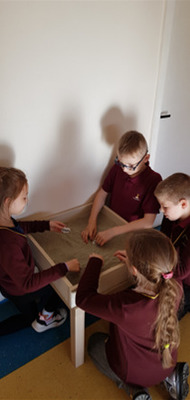
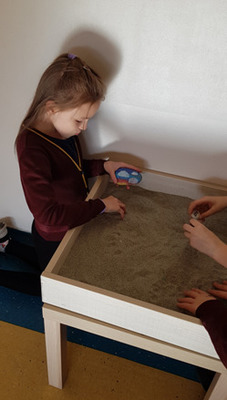
Coasters
During the Lithuanian language and literature lessons, students discuss the treasures of native language - rich vocabulary. The students were given the task: to conduct a research on the topic "The most beautiful words of the Lithuanian language". Students had to interview their peers, family members and choose the most beautiful words of the Lithuanian language.
After that, the students programmed the design of the coasters during the technology lessons: the most beautiful words had to be written on the coasters and the design of the coasters had to be linked to traditional Lithuanian patterns.
When the sketches of the coasters were ready the students printed the trays with a laser printer.
